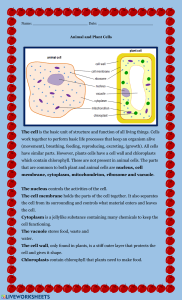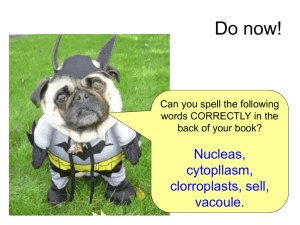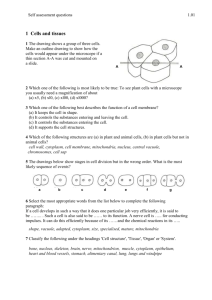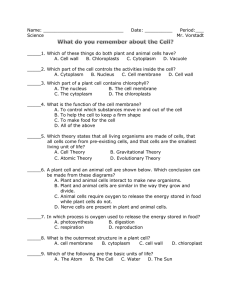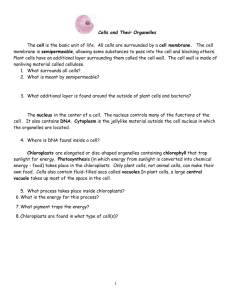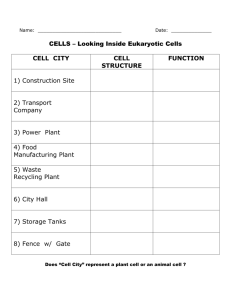Every living organism is made up of one or more cells
advertisement
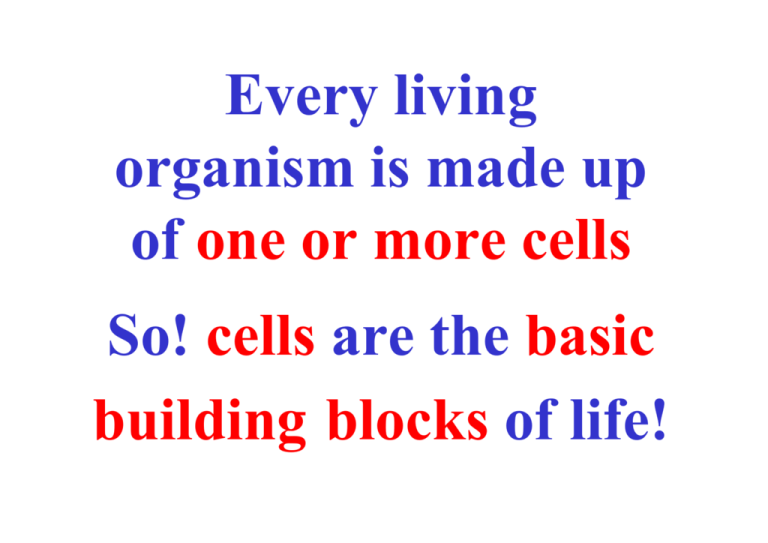
Every living organism is made up of one or more cells So! cells are the basic building blocks of life! Cells can be divided into two kinds of cells: Prokariotic cells & are cells which have no nucleus Eukariotic cells are cells which have a nucleus There are 2 types of eukariotic cells: These are plant and animal cells They have some things in common such as: • All cells have a cell membrane • Almost all (except red blood cells) have a nucleus • All have cytoplasm All plant cells also have: •A cell wall •A large central vacuole Green plant cells From green leaves Also contain Chloroplasts for photosynthesis However! If plant cells come from plant tissue that grows underground, there are no chloroplasts as the sun does not reach them. All the structures in the cells can be seen more clearly by using a stain such as… Iodine solution All the structures in the cells have a specific purpose Cells: Structure and Function Cell Structure Description Function (Plant and animal cells) Nucleus Cytoplasm Cell membrane Controls cellular activities. Passes information from generation to generation The site of all the chemical reactions and Fluid, jelly-like material processes that occur in the cell Controls the passage of Thin layer surrounding substances into and out the cytoplasm of the cell Large, normally spherical structure containing genetic materials (DNA) Cell Structure (Found in plant cells only) Chloroplast (Green plants only) Discus shaped structure containing green chlorophyll Cell wall Outer layer made of a basket like mesh of cellulose fibres Large permanent vacuole Fluid filled sac-like structure in the cytoplasm Absorbs light energy for the manufacture of carbohydrates during photosynthesis Supports the cell. Contributes to the plant’s ability to hold itself upright Stores water and dissolved sugars and salts in the form of sap. Regulates the plant’s water content by osmosis
